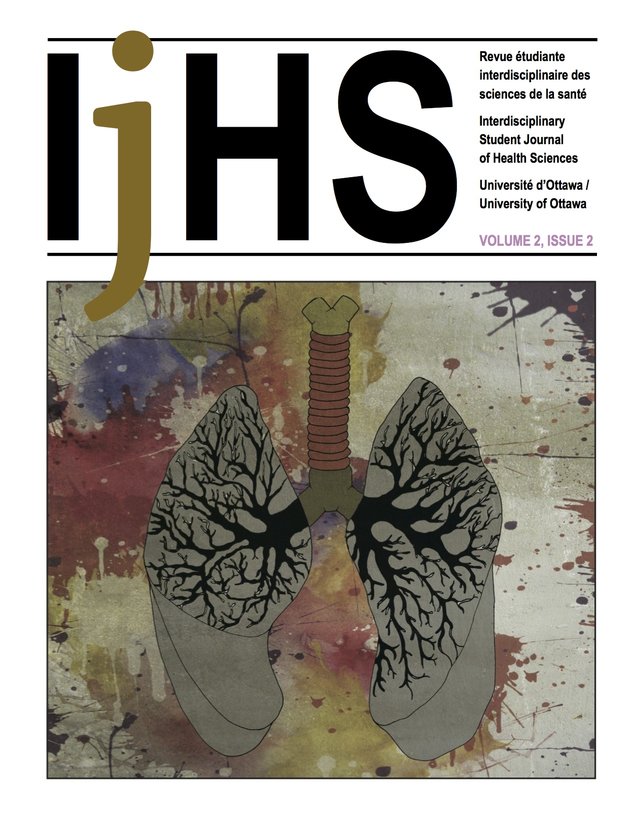The Disability Experience: Living with a Birth Defect Resulting from Thalidomide Exposure
DOI :
https://doi.org/10.18192/riss-ijhs.v2i2.1518Mots-clés :
Thalidomide, disability, disability experience, early onset disabilityRésumé
The drug, Thalidomide, is a classic example of how medicine has the potential to cause us harm. The market flooding of this drug in the 1950’s resulted in the birth of 8 to 10 thousand children with birth defects. Today in Canada this tragedy still affects the lives of approximately 125 individuals. How do these individuals live their lives and what has been the overall impact of their impairment? This article explores the lived experience of a woman born with upper limb phocomelia as a result of Thalidomide exposure. A one-hour unstructured face-to-face interview was conducted. Permission was received from the interviewee to make a voice recording of the interview allowing for a more concrete data review. The interview uncovered 6 primary themes indicating that a physical impairment resulting from thalidomide can have a minimal impact on an individual’s overall quality of life, as long as sufficient support and a positive self identity is present. The interviewee’s accounts suggest that living with disability is a unique experience that can lead to positive outcomes. The ultimate conclusion of this paper is that more extensive research is needed to further represent the voices of the disability community.
Références
Barakat, L. P., & Linney, J. A. (1992). Children with physical handicaps and their mothers: the interrelation of social support, maternal adjustment, and child adjustment. Journal of Pediatric Psychology, 17(6), 725-739. Retrieved from http://www.ncbi.nlm.nih.gov/pubmed/1484335
Datta, D., Selvarajah, K., & Davey, N. (2004). Functional outcome of patients with proximal upper limb deficiency- acquired and congenital. Clinical Rehabilitation, 18(2), 172 -177. Retrieved from http://www.ncbi.nlm.nih.gov/ pubmed/15053126
Duffin, J. (1999). History of medicine: A scandalously short introduction (1st ed.). Toronto: University of Toronto Press.
Galvin, R. (2003). The paradox of disability culture: the need to combine versus the imperative to let go. Disability and Society, 18(5), 675-690. Retrieved from http://www.ingentaconnnect.com/content/routledg/cdso/2003/ art00008
Geersten, H. R., & Gray, R. M. (1970). Familistic orientation and inclination toward adopting the sick role. Journal of Marriage and Family, 32(4), 638-645. Retrieved from http://www.eric.ed.gov/?id=EJO31443
Gingras, G., Mongeau, M., Moreault, P., Dupuis, M., Hebert, B., & Corriveau, C. (1964). Congenial anomalies of the limbs. Canadian Medical Association Journal, 91(3), 115-119. Retrieved from http://www.ncbi.nlm.nih.gov/pmc/articles/PMC1927284/
Goffman, J. (1986). Notes on the management of spoiled identity (1st ed.). New York, NY: Touchtone Press.
Lenz, W. (1992). Lecture: The history of thalidomide [lecture extract]: UNITH congress. Retrieved from http://www.thalidomide.ca/history-of-thalidomide/
Smithells, R. W. & Newman, C. G. H. (1992). Recognition of thalidomide defects. Journal of Medical Genetics, 29 (10), 716-723. Retrieved from http:// www.ncbi.nlm.nih.gov/pmc/articles/PMC1016130/
O’Carroll, A., O’Reilly, F., & Whitford, D. L. (2011). What has happened to people affected by thalidomide 50 years on? Irish Journal of Medical Science, 180(2), 475-8. doi: 10.1007/s11845-011-0683-7
Olkin, R. (1999). What psychotherapists should know about disability. New York, NY: The Guilford Press.
Vanchieri, C. (1997). Preparing for thalidomide’s come-back. Annals of Internal Medicine, 127(10). 951-952. Retrieved from http://www.ncbi.nlm.nih.gov/ pubmed/9946509
Verbrugge, L. M., & Yang, L. (2002). Aging with disability and disability with aging. Journal of Disability Policy Studies, 12(4), 253-267. doi: 10.1177/1044207300201200405
Téléchargements
Publié-e
Numéro
Rubrique
Licence
- Tous les auteurs dont l’article est publié dans la RISS en conserveront les droits.
- Les auteurs accordent à la RISS le droit d’être la première à publier les articles qui lui sont soumis.
- Tous les articles publiés dans la RISS sont autorisés en vertu d’une licence Creative Commons Attribution à être circulé si les auteurs et la revue de la publication originale sont reconnus.
- La RISS est publiée en ligne et imprimée. La RISS n’est pas responsable de l’utilisation non autorisée du contenu publié sous forme électronique ou imprimée.
- La RISS retient les droits de distribution de tout le contenu.
- Les auteurs, et non la RISS, sont responsables d’avoir obtenu les permissions nécessaires concernant les travaux cités.


